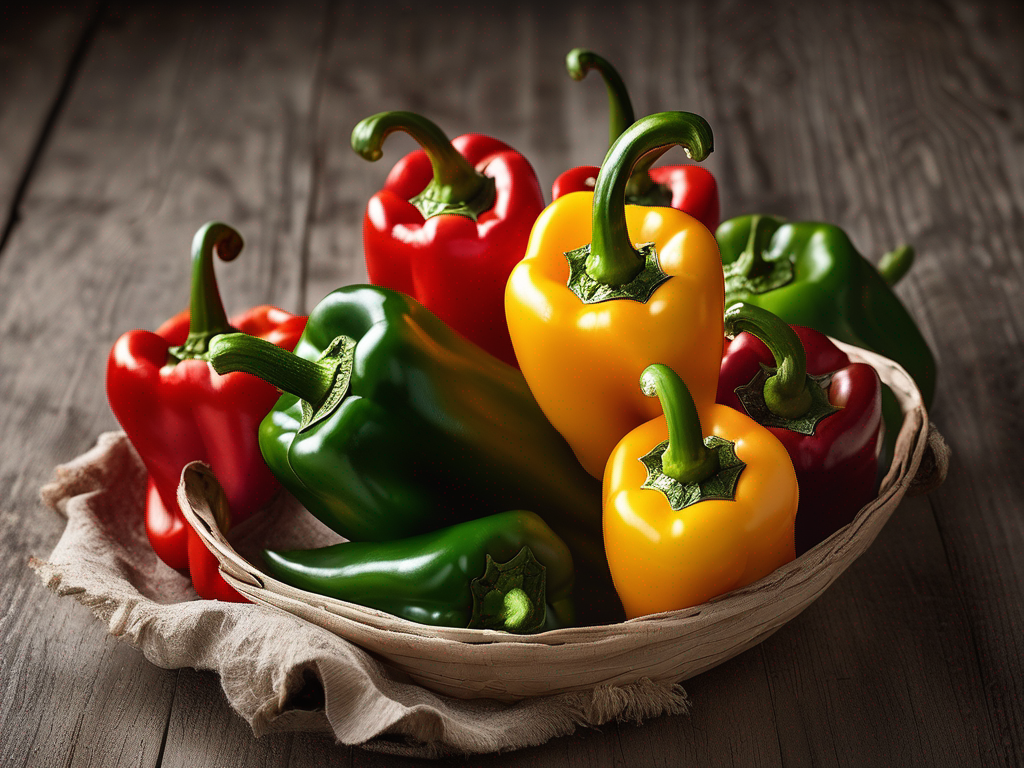
Is Your Pepper Capsicum Safe to Eat? How to Tell If It Has Gone Bad
Get Your Free Food Safety Cheat Sheet
30 most common foods with instant answers. Print it and stick it on your fridge—completely free!
Is Your Pepper Capsicum Safe to Eat? How to Tell If It Has Gone Bad
When it comes to ensuring food safety, proper storage and handling of fresh produce are crucial. Pepper capsicum, also known as bell peppers or sweet peppers, is a versatile and nutritious vegetable commonly used in various dishes. However, like any perishable item, pepper capsicum can spoil if not stored correctly. In this blog post, we will discuss how to tell if your pepper capsicum has gone bad and provide you with practical tips on food safety and storage. (Pepper capsicum)
Signs of Spoiled Pepper Capsicum
Pepper capsicum can spoil due to various factors, including improper storage, exposure to moisture, and contamination. Here are some signs that indicate your pepper capsicum may have gone bad:
Appearance:
- Mold or unusual discoloration on the skin
- Wrinkled or shriveled skin
- Soft or mushy texture
- Sunken or discolored spots on the pepper
Smell:
- Foul or unpleasant odor
- Sour or fermented smell
Taste:
- Bitter or off-flavor
- Unpleasant taste when consumed
If you notice any of these signs when examining your pepper capsicum, it is best to discard it to avoid the risk of foodborne illness.
Proper Storage of Pepper Capsicum
To extend the shelf life of your pepper capsicum and maintain its quality, follow these storage tips:
Refrigeration:
- Store whole pepper capsicum in the crisper drawer of the refrigerator.
- Place sliced or chopped pepper capsicum in an airtight container or resealable bag before refrigerating.
- Use within 3-5 days for the best quality.
Freezing:
- Wash, core, and slice the pepper capsicum before freezing.
- Blanch the pepper capsicum in boiling water for a few minutes, then cool in an ice bath.
- Pat dry and freeze in a single layer on a baking sheet before transferring to a freezer-safe bag or container.
- Frozen pepper capsicum can last up to 6-12 months.
Food Safety Tips
Ensuring the safety of your food is essential to prevent foodborne illnesses. Here are some general food safety tips to keep in mind when handling pepper capsicum:
Washing:
- Always wash your hands before handling fresh produce.
- Rinse pepper capsicum under cold, running water before use, even if you plan to peel it.
Cross-Contamination:
- Use separate cutting boards and utensils for raw produce and other food items to avoid cross-contamination.
- Clean and sanitize kitchen surfaces regularly, especially after handling raw meat or poultry.
Temperature Control:
- Keep refrigerators at or below 40°F (4°C) and freezers at 0°F (-18°C) to maintain food safety.
- Thaw frozen pepper capsicum in the refrigerator or under cold running water, not at room temperature.
Storage:
- Label and date containers of stored pepper capsicum to track freshness.
- Discard any pepper capsicum that shows signs of spoilage.
Conclusion
In conclusion, knowing how to identify the signs of spoiled pepper capsicum and following proper storage and food safety practices are essential for maintaining the quality and safety of your produce. By being mindful of these tips and guidelines, you can enjoy fresh and delicious pepper capsicum in your meals while minimizing the risk of foodborne illness. Remember, when in doubt, it's always better to err on the side of caution and discard any produce that may pose a health risk.
For more information on [pepper capsicum](/food/pepper capsicum) and other food safety topics, stay tuned for our upcoming blog posts. Stay safe and happy cooking! (Pepper capsicum)
Related Posts
Here are some other articles you might find helpful:
Authoritative Food Safety References
These agencies and university labs inform every tip and health precaution we publish.
USDA FoodKeeper – Cold Storage Guidelines
Official refrigerator, freezer, and pantry timelines maintained by the U.S. Department of Agriculture.
Visit USDA FoodKeeperFDA Produce Safety Rule & Grower Guidance
Field-to-fridge handling practices that prevent contamination of fruits, vegetables, and leafy greens.
Visit FDA Produce SafetyCDC Foodborne Illness Prevention Hub
Surveillance-backed guidance on pathogens, symptoms, and steps to reduce foodborne illness risk.
Visit CDC Food SafetyUC Davis Postharvest Technology Center
University research detailing optimal storage atmospheres for produce after harvest.
Visit UC Davis PostharvestPenn State Extension – Home Food Preservation & Safety
Peer-reviewed extension bulletins on safe canning, chilling, and reheating practices.
Visit Penn State ExtensionGet Your Free Food Safety Cheat Sheet
30 most common foods with instant answers. Print it and stick it on your fridge—completely free! Want more? Upgrade to the complete guide with 70+ foods.
Scan your food directly and get instant safety info using our AI-powered camera feature.